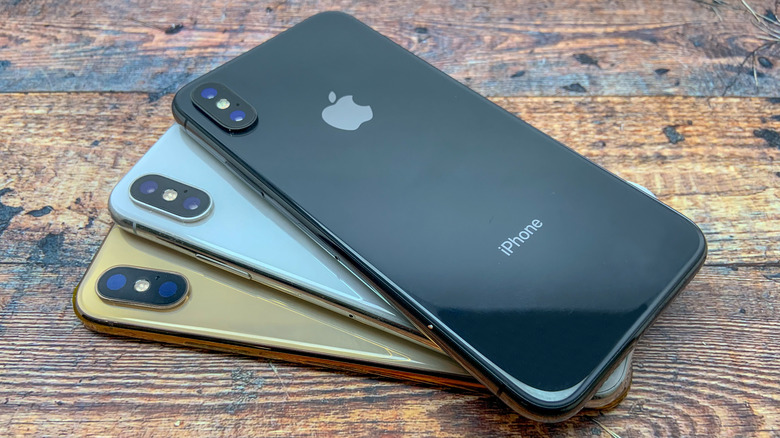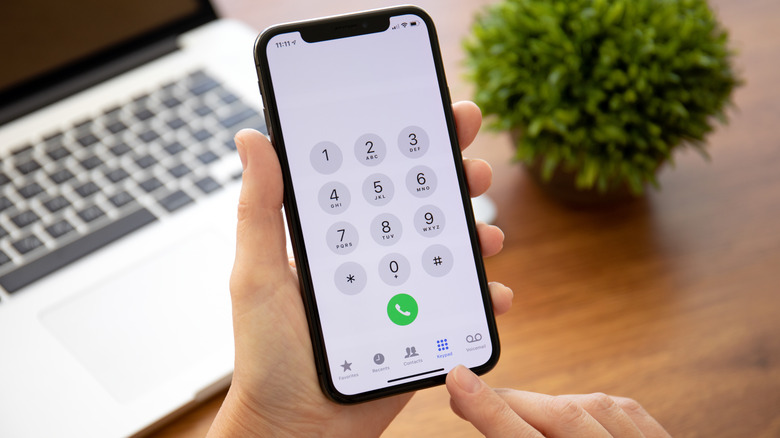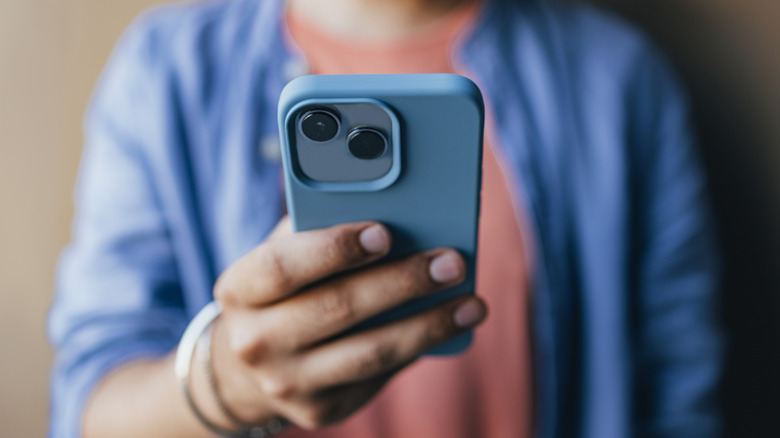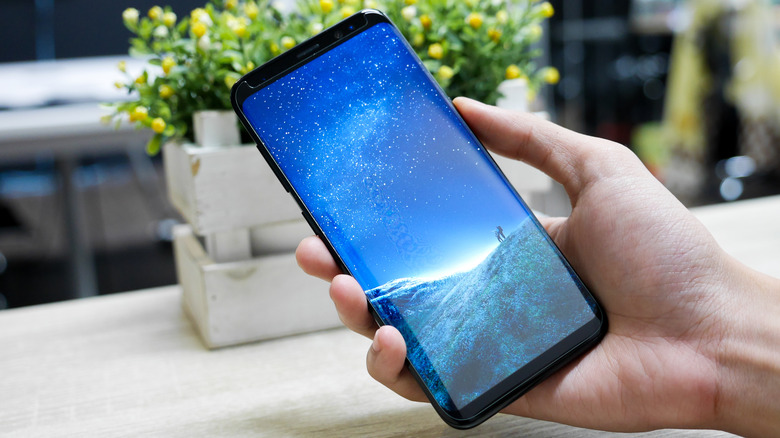Was The iPhone X As Revolutionary As It Was Intended To Be?
When the iPhone first hit the market in 2007, it completely changed our collective conception of what a cellular phone could be. The boldness of just having a single button on the face of the phone, which was mostly covered by a screen, cannot be understated, not to mention all of the features like Safari and iTunes that were built into the device. Apple spent the next decade refining what made that original model so great, introducing more apps, better displays, fingerprint unlocking, and bigger sizes for the phone. Then, in 2017, for the tenth anniversary of the device, the company introduced the most significant evolution of the iPhone since the first one.
This version was dubbed the iPhone X to mark the anniversary, even though it was technically the iPhone 9. What separated this version of the iPhone from its predecessors was not just a change in what was inside of the phone, but the actual device received a major overhaul as well, most notably in eliminating that signature home button to give way to a screen that completely covered the front side of the phone. Were these changes to the phone for the better? Let's dig into the iPhone X and see how it has aged and how it stacked up against its contemporary competition.
The highs and lows of Face ID
Since the iPhone X dispensed with the signature home button on the front of the phone, Apple needed a new way for people to unlock their iPhones. With the button, Apple was able to implement Touch ID, which used a fingerprint scanner on the home button as a biometric way to unlock the device. The new idea, which started with the iPhone X, was Face ID. This was also a biometric way of unlocking one's phone, but your face would be the key. When setting it up, the iPhone would take a 3D scan of your face, and it would not unlock your phone unless the face within the camera's view was saved to your device.
Face ID has a lot of pros and cons. On the one hand, your iPhone is probably safer than ever, as it can be a lot harder to fool your iPhone into unlocking for another person (unless you have an identical twin). On the other, the scanning process does not always work. If your face happens to be in the wrong light, at the wrong angle, or partially obscured by glasses or a mask, then it may take quite a bit of adjusting on your part to get your Face ID recognition to work, even if your settings allow for these circumstances.
As someone who still regularly wears a face mask in public, I often struggle with opening my iPhone, and my phone is several generations beyond the iPhone X. The Touch ID system wasn't foolproof either, but adjusting one's thumb is far easier than adjusting one's facial position and angle. When Face ID does work, it works perfectly to the point where you don't notice it.
Standardizing multiple cameras
The iPhone X was not the first iPhone to feature multiple rear-facing cameras. That would be the iPhone 7 Plus, and the iPhone 8 Plus followed suit. However, the iPhone X was the first baseline version of the iPhone to have multiple. On the back, you could find two lenses. One was a wide-angle lens that was also capable of capturing 4K video, and the other was a telephoto lens.
Before this phone, having this kind of camera flexibility on your phone was an added upcharge that wasn't available to everyone buying a new phone. Now, having multiple cameras on your phone has become a standard issue across the board. If Apple was going to do its best to push out the digital camera market, giving more people these kinds of visual options was key in doing just that, and as social media apps like Instagram took off, it made the cameras on these phones even more important than they already were. While the home button and Face ID deletion had their detractors, nobody can dismiss the iPhone X for upping the camera game.
However, that didn't necessarily mean the iPhone X was at the top of the ladder when it came to phone cameras, as the contemporary Google Pixel 2 put up quite a fight. According to CNET and Tom's Guide, the iPhone outperformed with zoom and video quality, whereas the Pixel 2 was better at capturing detail and sharpness.
The competition
Alongside Apple, there are two other major players in the smartphone game, Samsung and Google. The same year as the iPhone X, Samsung had the Galaxy S8, S8+, and the Note 8, and Google had the Pixel 2 and Pixel 2 XL. Like the iPhone, all of these models also eschewed physical home buttons on the front of their screens. However, the facial recognition for the two Galaxies and the Pixel was nowhere near the sophistication of Apple's Face ID.
As far as cameras go, the Galaxy Note 8 is the only one of these three to feature multiple rear-facing cameras, which is the equivalent of Apple keeping the multiple cameras exclusive to the Plus options rather than adding them to the standard ones. In terms of internal storage, there was no competition. The iPhone X could get you up to 256 GB, whereas the Pixel capped out at 128 GB, and the two Galaxy phones only got you 64 GB of internal storage. You would either have to spring for microSD cards for external storage or spend extra to get a Galaxy S8+ for 128 GB.
The iPhone X was significantly more expensive than its rivals, with a base price of $999. Meanwhile, the base for the Pixel 2 was $649, and the S8 and Note 8 were $750 and $930, respectively. Apple has subsequently dropped the prices of their iPhones, with the current generation iPhone 15 starting at $799, but you generally pay a premium with Apple. If you needed Face ID, dual cameras, and iOS, then that premium was worth it. If not, you still had excellent other options.



